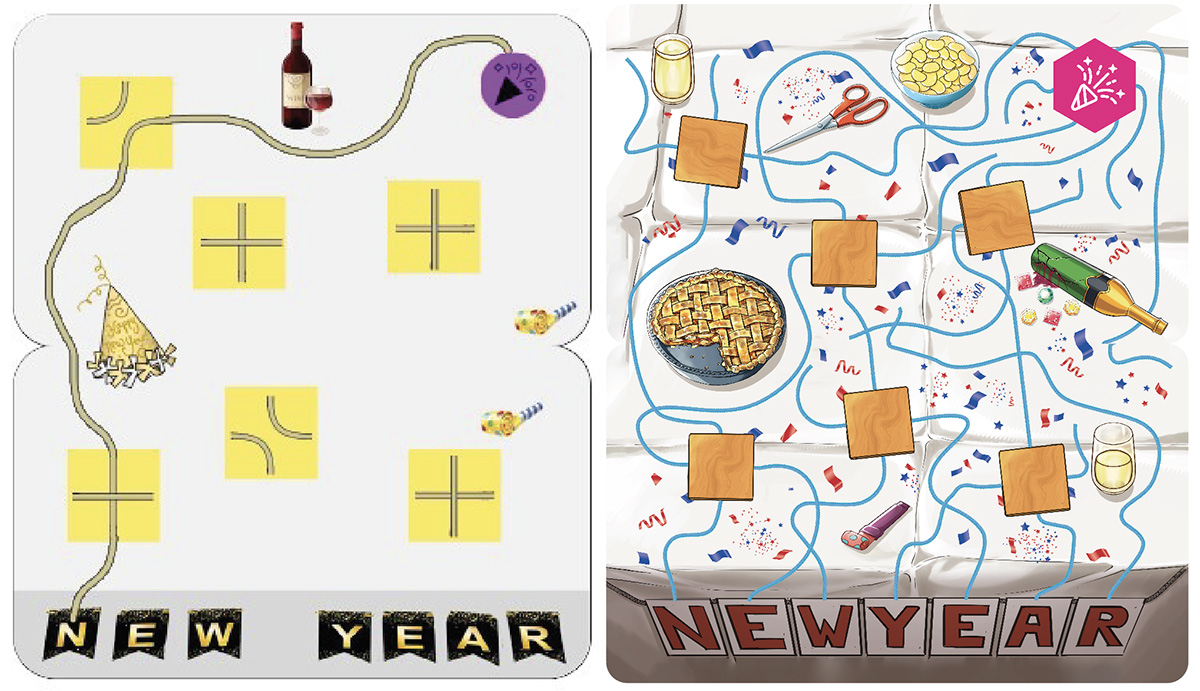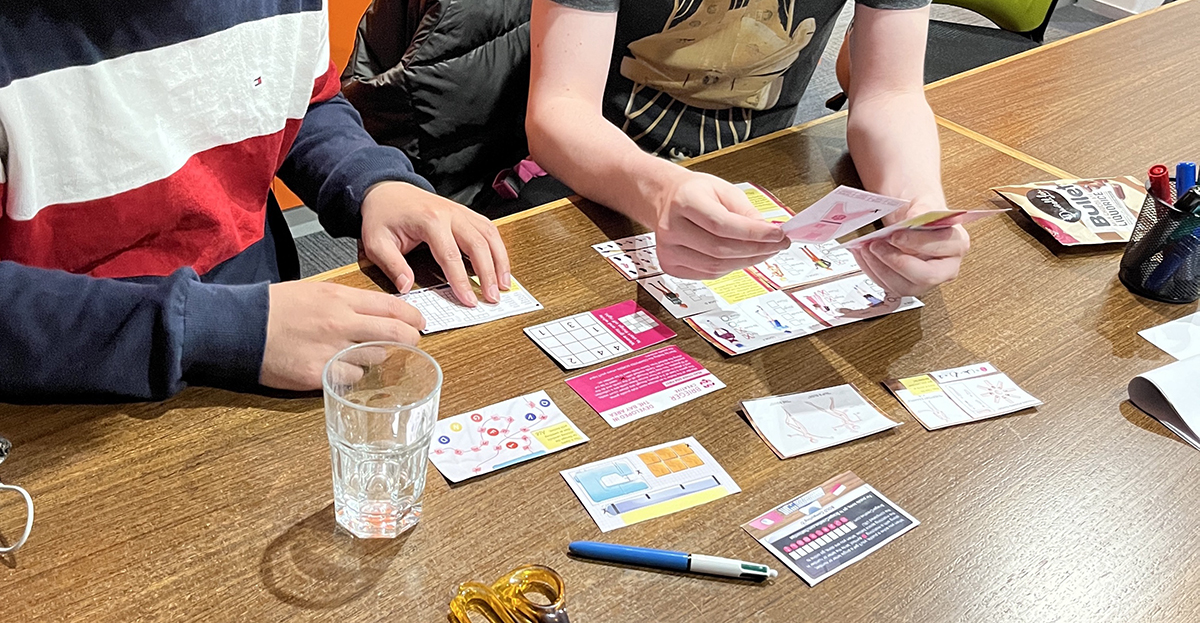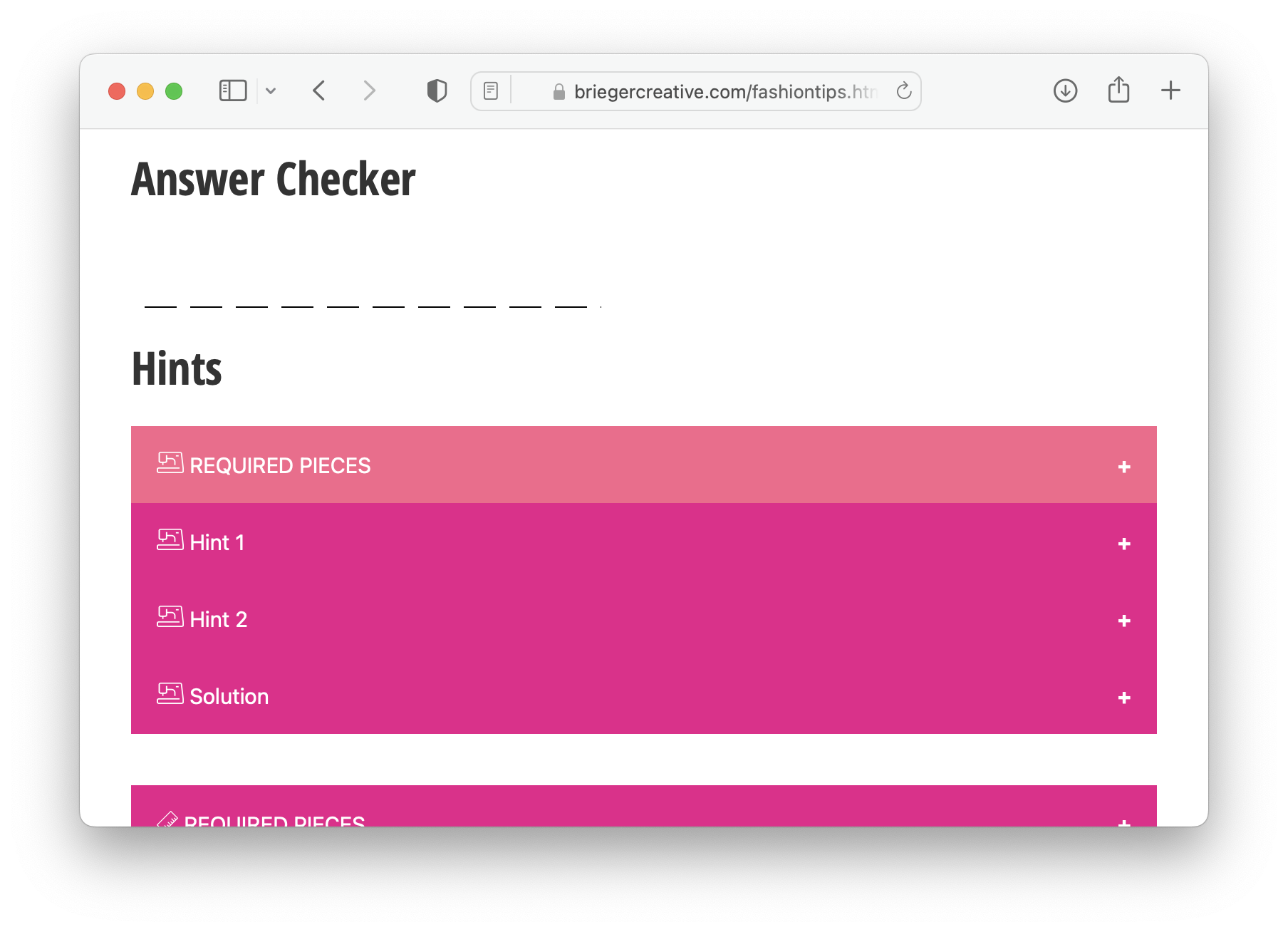Murder at the Atelier

About
Murder at the Atelier, designed by Velgus and published by Brieger Creative, is an escape room style puzzle game for 1-5 players themed around a murder at a fashion house. It comes in a bright pink foil booster pack, sized so that we could mail it as a holiday card.
Across the 18 double-sided tarot cards are 10 puzzles that can be solved in any order. Players will need a writing utensil and scissors for some of the puzzles. An online page gives optional puzzle clues in the form of fashion tips. The answers to each puzzle form a hidden URL that acts as the conclusion and gives extra narrative to the murder that took place.

Project Overview:
We wanted to send out a holiday card for our friends in the industry and in true game developer-fashion, we turned it into a game! To mail it out in standard envelopes, it would need to be thin and compact — but still showcase our in-house puzzle design and production talent. After a lot of brainstorming, we decided on an escape room style experience of oversized tarot cards, packaged in a sleek booster pack.
Design was focused on puzzle variety and overall experience. We have twists on familiar puzzle types like hidden message, crossword, and logical deduction, along with some fresh concepts most players haven't seen before. We really wanted to push what could be done in the form of 18 tarot cards and convey the crafty feel of creating fashion. Cards are written on, flipped, cut, overlapped, aligned, weaved, and slotted together. The fashion studio setting ties the puzzles together, while notes from in-game characters provide an extra narrative layer and optional mystery players can discover.

Our Scope:
- Puzzle Design and Development
- Narrative Integration and Theming
- Playtesting and Analysis
- Art Direction
- Project Management
- Publishing
Case Study: Playtesting Puzzles
Like board games, puzzle games need playtesting with actual players to identify what works and what doesn't to help guide development. However, playtesting puzzles has its own unique set of challenges, mainly finding new players, tuning difficulty, and overall engagement.

By its nature, the same puzzle can only be played a single time. Compared to board game testing where a core set of repeating players can be very helpful, puzzles always require new players. Plus, new players are needed at multiple stages of testing, including testing the puzzle concept individually, testing the puzzles together as a full experience, testing with art and graphics, and testing hints. Like board games, puzzles are best tested in person with careful observation too.
Luckily, the Brieger Creative team runs the largest contract playtesting program in North America, and we can use it for our internal projects too! We activated tests in San Francisco Bay Area playtesting community and outside at events like conventions and design retreats where we could tap into a wide pool of effective testers. Our graphic designer, Jason TotoTam, ran further tests with his community in Australia.

It's very hard to create puzzles at an appropriate difficulty. While members of our team are experienced in creating puzzles, it's common to go into early tests with puzzles that are too complex, illogical, or unfair — or on rare occasions make one that is surprisingly easy to figure out in a way the designer didn't intend.
There is a fine line between fun and frustration that only multiple iterations and many tests can narrow in. Puzzle design can sometimes be thought of as multiple layers, and we streamlined by reducing the number of layers and focusing each puzzle to one core concept. Where possible, individual puzzles with multiple steps had an easier clearer step to get started. An online tiered hint system was added to allow players to control their challenge level and pacing.

While Murder at the Atelier is meant to be a challenge, fun is always more important than challenge intensity. A variety of themed puzzles were made to keep things as interesting as possible and allow for different player types. We worked to focus each puzzle on those key "Aha" moments.
An Aha moment is that big reveal when a part of a puzzle mentally clicks for the players. The emotion and cleverness of this moment cannot be underestimated and is central to how these puzzles are designed. Each puzzle had multiple layers to figure out, challenging the player to think creatively and adapt. The meta-answer reveals a logical, yet fun pun. The hint system is written in a way to guide the player without giving away and revealing moments.
Working on internal projects that aren't for commercial release is a fun way to push our skills and surprise our clients and friends. We're very proud of the final results with Murder at the Atelier, and hope to continue the "holiday game" tradition in years to come!
Brieger Creative Team
- Design: Velgus
- Development: John Brieger
- Production: Chris Solis
External Team
- Graphic Design: Jason ToToTam
- Art: Alex Tantraz